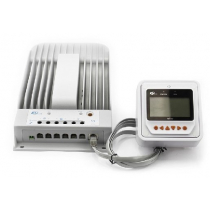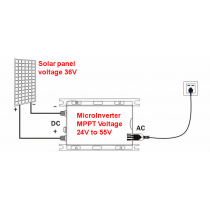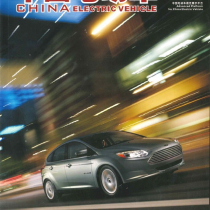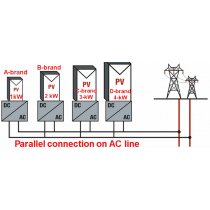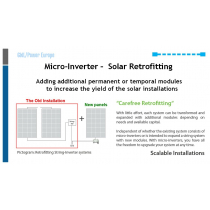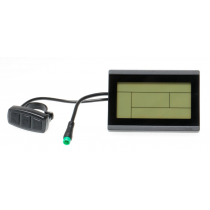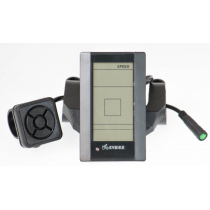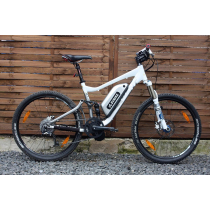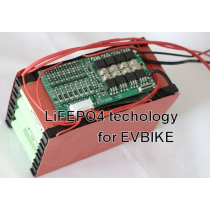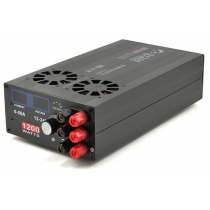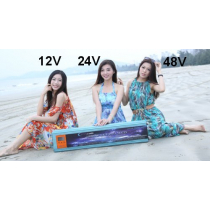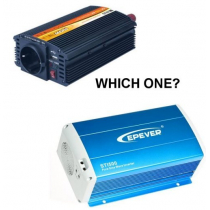Blog
GWLG/Team is testing — thermal release from the terminals
The copper bars server as heat conductors. The purpose of the test is to see how the cell will increase the temperature when there is a source of heat applied.
This also serves to test the function of the BMS, to detect and react to the terminal overheating.
BMS 123 is used for these tests.
&nb
ELERIX EX-L6C 32700 6 AH cell
ELERIX EX-L6C 32700 6 AH cell
The industrial format 32700 LFP cell with 3C support and 6000 mAh.
Get more details form GWLG/Team requesting the VIP support.
Závislost na Číně je nebezpečná, říkají...
Michal Klečka byl se svou společností i4wifi jedním zprvních distributorů hardware pro mikrovlnné bezdrátové spoje už vraných dobách internetu, kterým neochvějně dominovalo ikonické chrčení modemů od tehdejšího gi
Dependence on China is dangerous, say the founders of the...
With his company i4wifi, Michal Klečka was one of the first distributors of hardware for microwave wireless connections in the early days of the Internet, which were unwaveringly dominated by the iconic grunt of modems from the then giant Český Telecom.He successfully sold i4wifi in 20
GWL: Helping customers to realize their ideas
The icons and symbols on the picture show the various areas of the customer ideas, projects and solutions that GWL has been helping with. From batteries for electric grass-mowers, batteries for electric vehicles, electric bikes, 12V batteries, to large battery projects, electric buses and other solutions fo
GWL Team at Intersolar 202 – C2.436
Check the photos of the participation of the GWL Team under the AMVOLT Brand at theEES Europe section of the Intersolar 2023.
BMS Easy Balancing Board
GWL Team is working on a design ofthe balancing boardthat will be used for 4 cells and will allow balancing up to 10 Amp.
Check the photos from the testing of the first prototype.
More details to follow, when the product will be verified and made available.
GWL at Intersolar again – C2.436 in hall C2
Since 2012, GWL has been exhibiting at the Intersolar Munich Exhibition. This year (2023) GWL is showing the AMVOLT brand products at the EES Europe section dedicated to battery storage.
Come and meet GWL at stand C2.436 in hall C2.
BMS Easy – an easy way to monitor your cells
The BMS Easy is a single cell protection board for the low voltage and over voltage monitoring of the LFP cells.
It allowsthe serial connection of multiple cellsto get a closed circuit with monitoring of larger packs.
It also providesthe parallel connection signal that can be used to rep
The Solar Power System for Your Home – Guide / eBook
What you should know before you order a solar power system for your family home or office. The fourteen questions, answers and a step-by-step guide using a sample installation.
Increase your knowledge by reading the Guide book to understand more about the solar installation step by step.
The topics discussed
The 7 Ways Your LiFePO4 Battery can Move You on! – Guide /...
Get the tips for using the LiFePO4 battery to boost your installation performance.
- Your Children Might Grow Up and It’s Still Running
- 4x Cheaper. Save Your Money
- It Won’t Explode
- A BIG, Simple Boost
- Stop Worrying about Charging
- Almost Zero Work
- Save the Forest, Save the Planet
Download the
The Backup of the Critical Infrastructure – Guide / eBook
Reliable backup of critical infrastructure. How to keep your home, office or facility up and running during a power outage.
Is critical infrastructure protected in the event of a power outage? It may come as a surprise – but it isn’t. At least it usually isn’t.
Are you operating a
Hi computer! How old are you? As old as Unix.
Recently, an automated setup using a small Linux board for battery monitoring stopped working. The GWL/Team tried to verify what went wrong. Everything seemed to be working fine and there was not any malfunction of the hardware.
After many hours of investigation, we have found out thatthe reason for the fai
FAQ: What is the Cycle Life Estimation of the Elerix Cells
As given in the datasheet the cycle lifer is specified by the charging and discharging speed, the depth of discharge and the operational temperature.
The typical life span is given at this:
Cycle Life at 80% DOD —- 3000 cycles —- @0.3C/1C, @25°C, >80% SOH
This means that fo
BMS Basic integrated with Charger
Check the connection diagram for the integration of the BMS Basic and the DC Charger
More about (based on the)
Check the quality.
Connecting the Cells: Fixed Bars or Flexible Connectors?
Question:I need to connect several cells in parallel, what type of connection should I use?
Answer:The answer is simple.It is always recommended to use the flexible connection.Never use the fixed harness made of copper rod that consisting of a solid material with no flexibility
What is the real self-discharge of the LFP cells?
Question: I have received a shipment of LFP cells from you company. When I received them, the voltage was about 3.25V for each cell. Now the voltage is below 3.10 for some cells and some have even just 3.0V or even less. Why is this so?
It is important to realize that cells shipped from GWL have on
A New Year’s Greeting with a Thermal Runaway
Have you ever burnt the dish on the stove?GWL Team has just begun the New Year with a similar experiencecaused by an improper cell operation.
As a result of a human operator failure and as a result of an improper setting of the charging machine,GWL team has just experience a thermal runaway for a 10
FAQ: Operation of the LFP cells at high temperatures above...
Question: I saw that some LFP cells allow the operation up to 65°C or even more. Do you have any suggestions for a high temperature operation?
Answer:The GWL team stronglydiscourage the continued use of the LFP cells in temperatures above +50°C.
Even though some datasheets ma
Happy New Year 2023
Since 2009 the GWL Team has been working hard to support and promote the DC Power Based solutions.
At this moment of the New Year we keep sending the best wishes to all supporters, fans and customers of the battery and sollar panel based DC technology.
Enjoy the whole year 2023 and le
An X-mas Gift
A photo of the Alpha prototype batch for the BMS Easy.
The GWL colleagues are HEROs who keep working at any day and at any time.
Enjoy your X-mas.
Make The Internet Free Again
The internet would be a much free and relaxed space without the global corporations, that keep monitoring the behavior of the users by means of the tracking scripts.
Interestingly some companies have introduced the reversed response, by eliminating the user access, so that their employees
Is PLUS red? Not always
What color is the plus pole? , the PLUS pole is marked by RED color and the MINUS by the BLUE color.
However, in Asia, sometimes there is a reversed color coding, wherePLUS is marked by the black colorandMINUS by the red color.
Keep t
ELERIX small size cells - EX-L10, EX-L15, EX-L25
The small size cells are designed for any kind of DC application where you need a smaller capacity.
.
ELERIX - You Power the Life
MEANWELL PB Series of Chargers 12V, 24V, 48V
Check the time-limited offer for the MEANWELL PB Series Chargers for 12V, 24V and 48V applications.
.
See also here -
Battery Tester and Resistance Meter YR1035+
The YR1035+ measures the voltage and the internal resistance (Ri)of the cells and batteries. It is one of the most practical and reliable products on the market.
If you need to check the voltage and the internal resistance (Ri) of your cells or batteries, this meter is a must for you.&n
MEANWELL — RS Series — 10W and 15W Power supplies
Great Price/Performance ratio - small size3.3V and 15V power suppliesthat can be usedto charge single cells (LFP 3.65V) and batteries (LFP 14.6V). These power supplies have the user adjustable voltage level.
Note: These products are designed as power supplies. They can be
MEANWELL — NPB 120W, 360W, 450W, 750W and 1700W Chargers
The complete product listing of the robust and adjustable chargers from MEANWELL.
The HIGH POWER and yet COMPACT 12V, 24V and 48V chargers.
Follow here for more details: .
MEANWELL HEP 600W Fanless Chargers
Do you need a charger without the noise of the fan (ventilator)? Check the passively cooled MEANWLL HEP series.
Follow here for more details:.
It’s Easy! BMS Easy
Check some more initial connectiondiagrams for the BMS Easy.
BMS Easy is a simple and easy monitoring for individual cells and battery packs.
Stay in touch. More to follow.
In the mean time you can check the.
When the Web is Down – Getting in Touch with GWL
HELP: I wish to visit your web; it seems not to work. What to do?
Yes, it may happen — as the image shows —GWL’s server failure in 5/2022.
In this situation,the best idea may be to send an email with the information about the error and to write also your request by email
Getting the dimensions of the cells – 3D PDF helps you!
FAQ: I need to get the exact measurements of the cell to design our own battery box. Please send be the drawing.
Answer:
1) Yes, of cause, the best idea isto get the samples of the cellsto make a small demonstration installation and design the size of your solution based on the real prod
Transparent solar panels - Design ideas or a reality?
There are often some nice ideas showing the possibility of small solar installations that provideboth shading and a place for a production of the electricity from the sunshine.
- Solar roof that is shielding your terrace
- Transparent roofing above the door step (or porch)
- Solar shielding above t
New project from the GWL’s kitchen: BMS Easy
GWL team has been working on a project of a simple BMS solution. The name isBMS Easy.
More details to be coming in next weeks….
The Real Electric Bus Crash Test – the Bus Hit by a Train
GWL’s customer operating the electric bus with a LFP battery pack has involuntary performed areal EV Bus crash test. The bus driver in Northern Bohemia was passing the railway, while the local train was approaching. Unfortunately, the bus driver did not let the train pass first andthe
The ELERIX EX-L12V100R – service connector extension
The photo of the components that allow the expansion (or extension) of the service connector for the.
NOTE: If the servic
Tips for useful accessories for 12V packs
Check the overview of the useful accessories to make it easier for you to use and.
Ready to go?
The Magnetic Service Connector - The Making of
These photos show the magnetic service connector for the.
The opposite part of the connector is supplied withthe packing of EX-L12V100R. Optionally you can purchase another connector separately.
To make the servi
FAQ: Testing the capacity of the cell or battery
Q: I wish to check the capacity of the cell in my battery pack. How to do that?
Answer:Originally there were not any suitable products in the market that would allow the quick and easy testing of individual cells or the packs in a battery. There were only some costly and professiona
GWL in 2020 and 2021 - the Company Profile
GWL Team keeps publishing the yearly statistics with the business results and details on our activities.
Check the update for the data and GWL’s activities for the last two years: 2020 and 2021..
You can also download the previous GWL Company Reports at the bottom of the.
Connection of CPM with AMETEK Latching relay
This diagram shows the connection ofthe AMETEK Latching Relay with CPM Board.
The relay is controlled by theCPM Board contacts. However, because the AMETEK Latching relay needs a high current rated power supply for the coils, the latching relay itself needs to be connectedby means
Connection of BMS123 with AMETEK Latching relay
This diagram shows the connection ofthe AMETEK Latching Relay with BMS123.
The relay is controlled bythe BMS123 Load Relay NC contact. The auxiliary relay is powered by the DC main voltage and it will create the impulse signal for the latching relay to disconnect.
Since the main
Inside GWL: Is it a science or it is a mess?
This question will come to your mind when you seethe testing table of a GWL’s engineer. Is this still an organized work or is it rather some form of a total mess?
Luckily this is a “regular” testing status of the table under the operation. Simply: “everything is under the control.&rdqu
TEST REPORT: Low Temperature Performance of the LTO Cells
Check the Test Report for the ELERIX EX-T30K LTO cells that shows the performance of the cells at +25°C and also and -25°C.
This test confirms the excellent energy storage capacity for the LTO cells even in the low temperature conditions.
The results show that even under -25°C the LTO cell pro
The storage is easy! Just 64 cells to make a 205 kWh
A massive energy storage solution using the. Four times 16 cells make the total of 64 cells with 3.2V and 1000AH.It is altogether 205 kWh of energy storage.
This solution was assembled as a part ofthe AMVOLT projectthat is fully scalable and serviceab
FAQ: Will the panels from GWL really work for 30+ years?
Answer:GWL team is definitely sure the solar panelswill work for at least 30 years, perhaps even for 40, 50 or even more years.
The solar panels supplied by GWL are manufactured by the latest technology standards and methods.
The oldest customers of GWL have installed solar panels in 200
FAQ: Testing cells or packs at a customer location
Question:I have a battery pack installed in my EV (in my boat, in my RV, in my house, etc.) I wish to check the condition of this pack to see the real capacity of the cells. Can GWL offer any solution for me? (Perhaps you can come to me for the weekend and make the test. Or you can send m
FAQ: The performance of the lead-acid cells in cold and...
The winter of 2022-2023 is coming in just a few months and many customers wonder aboutthe performance of their battery packs. Especially those who have been using the lead-acid batteries.
The performance of the lead-acid batteries drops significantly in sub-zero temperatures.The above diagr
FAQ: Voltage level for the LTO cells
Question:Concerning the LTO cells, I can see that some information mentions the nominal voltage at 2.3V some other datasheets say 2.4V. I wonder what is the nominal voltage of the 5-cell pack: 11.5V or 12V?
Answer: both versions of the information are correct. The reason is that the disc
GWL (as AMVOLT) at Intersolar 2022 - B2 175
GWL was present at Intersolar again - after the“pause” of 2018, 2019, 2020, 2021.
Our booth was presented under the AMVOLT brand at Smarter E Europe (Intersolar Europe, ees Europe, Power2Drive Europe and EM-Power Europe).
AMVOLT is a division of GWL a.s. and manufactures
GWL Team at Intersolar 2022 - GWL Stand Build-Up
Even though Intersolar 2022 is already gone, are you wondering how the construction of our stand went?
It wasn’t exactly easy maneuvering with the container energy storage, but everything worked out well in the end.
Check the product solutions for large modular energy storage from
Playing Baseball at Night?
The days in summer are long here in Czech, however the days are getting shorter quickly in Autumn. To allow a longer playing activity and to extend the use of the playfield in autumn or in early spring, theBaseball Team PRAOTCI ROUDNICEhas decided to install a night lighting for the field area.
GWL/Modular BMS Basic in Action!
Check this Youtube video to see how to install theGWL/Modular BMS Basic into a 24V battery pack.
Check these main components used in the set-up:
ELERIX 110 Ah
ELERIX battery holder
GWL/Modular BMS Basic
A Massive Single Cell Charging – 720 Amps
The photo shows 6 units of theto be used as single cell chargers. The nominal voltage of the power supply isset to 3.6Vand it can charge withup to 120 Amp.
The charging power of the 6 units in parallel will reach3.6V, 720Amps. Is it
MEANWELL – the Charging Solution for 12V, 24V, 48V and...
The universal chargers from MEANWELLto charge the battery packs. See the various product lines:
models for 12V, 24V and 48V.
with passive cooling.
, currents 15A to 120A.
MEANWELL = Quality
Overview of the Complete Guides from GWL
In 2020-2021 GWL has published several technical guides to assist our customers. Check these Complete Guides and get the knowledge and know-how to improve your DC-AC solutions.
Use of LiFePO4 Batteries in Ships
LFP and LTO Battery Guide
Battery for Caravans and RV - Guide
GWL/Modular - Energy storage for REAL projects – not just...
In 2021 GWL has been supporting local partners in deliveringseveral REAL energy storage projects.
Simply said, the energy storage solutions promoted by some countries and local governments for household applications, with 5 kWh to 15 kWh, are just expensive toys. People will spend a lot of
A big change for the solar panels in 2021
The year 2021 wasthe year of a big change for the solar panels. First of all, due to the so-called pandemic crises, the costs of the solar panels grew significantly. Also counting withthe sharp increase of the cost of the transportation, the selling prices the solar panels in Europe kept incr
Follow the GWL Team Projects
GWL Team is publishing the examples of the design drawings and installations for our customer projects. Check thefor the drawings and designs.
Flexible Solar Panels for Metal Roofs – East-West...
This installation has the total of522kWp of flexible solar panels. This means there are 1680 pieces of the.
Solar panels are mounted on a light weight construction withA-shape-frames in the direction east-west. This way the total yield is increased by allowing
AMETEK - high current DC latching contactors
GWL has introduced thehigh current rated DC latching contactors for 400A, 600A and 1200A rating.
Check more details here -
See the installation diagrams for the application withand.
RV ELECTRICAL SYSTEM - 7 Questions and answers
INSTALLATION MANUAL by GWL
- Are you replacing the on-board battery in your RV?
- Are you modifying the electrical wiring in your RV?
- Have you started with a more complex renovation?
- Are you getting an RV and you’re not sure which electrical system to go with?
7 Questions and answers
- What type of
GWL Team Design of the EX-Switch
GWL/Modular EX-Switch
The missing element for switching between the DC and AC world. Simply use the GWL/Modular EX Switch. The EX-Switch is a complete switching board solution to be certified according to the EU norms. Useful for any system in Europe.
As usual, the GWL Team will be releasing
How to build your own Electric Vehicle Charger?
How to build your own charger?
For building an EV charger, you will need a control circuit that communicates with the onboard charger in the vehicle using a special signal, which also switches on the relay. We sell several : 1. with a fixed charging current of 16A 2. with an integrated single-
Useful information about ETFE technology for 310Wp and 100Wp...
The surface is ETFE, what is used in the construction industry everywhere, where no cleaning should be necessary. Sample Allianz Arena Munich. Only the rain is washing the surface and it will be clean.
Characteristics of that material can be found under:
What is the cost of the energy with storage? Germany:...
In Germany, there was an auction of the energy storage projects. The German regulator body,. Sorry to say the auction was not successful, because only 155 MW was assigned after all.
The technical requirement is that in addition to the direct production from the ren
Flexible solar panels for boats and yachts
Example reference of the installation ofon the roof of a luxury yacht.
In this installation there are18 pcs of. The total solar power is5.6 kWp.
The installation powers a48V DC installationwith lithium battery and.
With 6 hours of direct sunlight from 9 am to
The Core of the House and The Ready House!
This is one of the photos from the construction of theCzech Sustainable Houses (CSoD) project.
The top photo was takenin first part of 2020, when the core of the house was completed and before.
In early part of 2021, the house has been completed. Now there is a lot of final work needed
The GWL/Modular Solution - Wiring Diagram
This is the installation diagram or schematics forGWL/Modular complete solution of the “The Bestie” or the “Beast”- the complete energy center forthe.
The documentation is available as a part of the project for any customers and partners who
The Basic Protection of the Battery Cells
1) Battery monitoring
The CPM1 serves as the battery monitoring device.
2) Flexible connection to each cell in the battery
The cells can be disconnected completely and easily. In this example the disconnection is done by means of the Battery link cable
GWL/Modular FV Elerix - From the Roof to the Energy Storage
A complete solution using. From the roof equipped with the, to the SOLAR ENERGY HUB that contains theand the Energy storage Cabinet with thebattery pack.
A complete, robust, scalable and reliable solution that can be installed by any ski
The CSoD project – 100% Success in Winter 2021
The photo of thewinter day in January 2021. The sun is shining at the lowest sky position and it is quite cold outside even during the daytime. Yet, even in the deepest winter, theCzech Sustainable House project (CSoD)is full of energy and fully habitable.
Some of the doubters of t
The overcharge test of the TSWB 40AH cells
The summary of the data for the overcharge test of the TSWB 40AH cells.
- The over charge test wasperformed for 30 minutes.
- The voltage percell increased up to 8V.
- The temperature of the packreached up to 130°C.
There was no fire, no explosion, no strong gas leakage.
The field test demonstration of lithium cell abuse
In the spring of 2019, the GWL/Team has organizedthe lithium cells abuse demonstrationto verify the performance in real conditions. There were following goals of these tests:
- Make the real field test demonstrations of the over-charge, short-circuit and fire abuse of the various cells: li-
GWL Videos to help you deploying your batteries better
GWL has published many videos on. Our goal is to help our customers and the whole battery communityto use the batteries better.
Check some of the more technical videos related to the battery pack assembly and operation
GWL/Power: Starting with LYP/LFP cells from W
Totally off-grid - fresh water pumping
This photo shows the very first part of the solar installation at theCzech Sustainable House (CSOD)project.
This is a completely off-grid installation oftwo solar panels (36 cells 160Wp), that run the water pump in the drilled well. The main purpose of this installation was to pump th
GWL/Team Making Safety Tests
In April 2019, GWL Team has made extensive tests of various lithium cells to demonstrate the results of abuse and damage for these cells.
One part of the test was adirect short circuit dischargeof a fully charged TSWB Winston 40AH cell.
The photos show the preparation of the test.
Less DC-contactors - More Smart DC-devices.
As you might notice, GWL as limited. The reason is that these DC contactors may be now easily replaced by more advanced semiconductor switching devices. Additionally such products may be available for purchase on-line from various quick-buy-quick-
Czech Sustainable Houses Project – Panels on the Roof ...
The video from the installation of the 48 pieces of. The total of15.8 kWpon the roof.
Enjoy!
The technical details of the “Beast” or the Bestie by...
This video (in Czech language) shows the details of the components of the “Bestie”.of all electric generation components in one cabinet.
Simply, see for yourself in full details.
The cell terminals must be perfectly clean!
Check the highlight from the
QUOTE:
Use only the original copper terminals #1). There are many reasons why you should not use any other accessories #2) to connect the cells. Check our knowledge-base for details #3), if you are interested in.It is very important to clean all connectors and terminals perfectly with sandpaper just before assembly. #4). Even small resistance between the cells would dis-balance the battery.
NOTES:
#1 –
GWL in Action: Making the Cities Electric Again
In 1950 the cities in the US got rid of their electric street cars systems. The photo from a tweet shows thePacific street carswaiting for the destruction in 1956. The same story was in Prague. There was a functional trolley-bus system operatingfrom 1936 till 1972. It was discarde
Components of the GWL/Modular pack
FAQ: Can Winston batteries work with Victron Energy inverters?
Of cause! Actually, way back in 2008, 2009 the Winston Batteries were the first and the very original LiFePO4 batteries that worked with Victron Energy products. There are customers that keep running the battery packs with Victron
GWL/Modular CPM - Expand the lifetime of your batteries
Make your Lithium battery last longer, simply, with fractional costs compared to similar solutions.
is an easy-to-use and effective three-level solution for the protection of the LiFePO4 and LTO batteries from excessive discharge or overcharge. The GWL CPM module helps your applications and
Some More Photos of the Camper Installation
See some additional .
Note the safety measures. You can see the main 250Amp fuse. Also there is a smoke, fire and temperature detector installed in the compartment on top above the battery pack. The detector provides a f
Four types of solar installations. Which one is the most...
Are you lost in the terminology of the solar installation types? Read our beginner's guide:
Grid-Tied Also known as “tied to grid”, or “grid-tie” system. This type of installation is aimed to make a profit by generating energy which is directly supplied to the grid. In some con
GWL 40AH LTO Capacity Tests
The charge and discharge diagram for the LTO 40AH cells.
Customer requested to prove the real capacity before the shipment. We are happy to demonstrate that the cells meet the specifications as declared.
LITHIUM BATTERIES: WHICH TYPE IS SAFER? - LiFePO4 vs LTO vs...
Li-Pol (LiPo) are widely used in nearly all cell phones and other home electronics. Yet, they are unstable and dangerous.
In our test, we compare LiPo with available LFP and LTO technologies. You may not recognize the danger sitting in your pocket, but consider the danger for projects involvin
FAQ: Please help me quickly with my unique project
Question:Hello, I am [Name] and I am from [City] in [Country]. I am the founder of a [startup, new, high-tech, special project] company focused on electric [bikes / motorbikes / motorcycles / EV cars, trucks, busses, vehicles] with [some special feature]. We would like to request you to kindly help us
Q&A: How to size solar inverters?
Q&A: How to calculate the capacity of an inverter for a solar system?
As for the winter months, the average accumulated production of the panels corresponds to ca. 10–15% of its summer production. However, during the bright and freezing winter days, peak output caneasily exceed 120 % of the nomina
The CPM improvements in progress
We are working on improvements for the. The modifications of the firmware will allow improved settings and communication with theCell Communication Module.
We have also madethe RF (radio frequency) emissions teststo make sure the GWL Modular CPM board is withing the EMC requir
Reference using of micro-inverter and solar panels
A lot of our customers want to reduce the energy consumption of their house with an installed heat pump system by producing their own energy from the sun. It is possible to do it without making an expensive commercial installation, by using the energy only for self-consumption but still with co
CityStromers - still running!
CityStromers - still running!
We have several customers who upgraded their electricusing the Winston Battery cells. Actually these lithium battery upgrades date back to 2008 to 2010 and make our oldest project references.
How to connect Solar regulator and Lithium battery,...
Complete guide how to connect your Solar panels with Lithium (Lithium Iron Phosphate, LiFePO4) batteries. We are using MPPT Regulator for maximal power drawn from the Solar panels.
You will learn how to connect the cables, how to operate with the regulator and how to connect the battery itself.
Links
How to recycle the industrial large capacity LFP cells?
The large capacity LFP cells should be recycledin the same way as all other lithium or li-ion cells.
There is no change or difference because of the size of the cells. As with any other cells, you should recycle only cells that were fully discharged and have 0V potential on the ter
Micro Energy Storage Setup – 2019 update
Micro Energy Storage Setup
NOTE: this is a grid-tied system setup with an energy back up to the batteries. This system is grid-tied only. The micro-inverter works only when the grid is present. If the grid is down, the system does not work. It is NOT an off-grid system.
NOTE (2019 update): the ill
LFP as starting battery
LFP as a starting battery – two concerns
Question: I want to use the LFP battery (4x 3.2V cells) for starting of my car. What SBM should I use to protect the battery?
You cannot use a SBM to protect the starting battery. For starting the car, the current will be very high,hundreds or
A combined Energy solution - Alfons container
A combined Energy Solution - Alfons Container
GWL/Power supplied the Winston Battery cells for the integrated hybrid energy solution called“Container Alfons”. This solution integrates the energy from three sources - solar, wind and a backup diesel generator.
Be sure to contact GWL/Power for more details and for the reference
New current measuring options for LAN Controller
New extension accessory current sensor forLAN Controller 2.0is available for your projects -. It allows to measure up to +/- 75A in circuits up to 277V AC/DC. Check our offer of. Follow the pictures for complete installation and se
GWL/Power Simple Battery Management Board 4 cells (12V/16A)
Theis designed for a simple protection of the 12V battery packs using the 3.2V LFP cells.
The SBM has higher rating resistors (bigger ones) so that the balancing current is little bigger. For even higher balancing currents we suggest adding the&nb
EVMosquit is here!
heEVMosquitis a hybrid between an electric bike and scooter! Enjoy the comfort of the electric bike with the speed of the electric scooter.
EVMosquit at InterSolar 2017
We will be showing theEVMosquitat InterSolar 2017. Come to check with us atIntersolar 2017: Hall B2, Booth 459.
If you want more details aboutEVMosquitnow, please contact.
The GridFree inverters for the energy solutions
The GridFree inverters for the energy solutions
for energy self-generation.
The world of the LTO technology
The world of the LTO technology
The 2.4V high performance cells for your packs and battery applications.
The LTO customized pack solutions - life is easy!
The LTO customized pack solutions - life is easy!
The innovative LTO cells allow a simple and easy assembly into the packs. As a result any company or individual with basic skills in electronics is now able to produce the battery packs with excellent performance. There is no need to use the welding machines to fix the contact terminals to the cells. &nbs
The GridFree inverters for the energy solutions
The GridFree inverters for the energy solutions
for energy self-generation.
EVMosquit at InterSolar 2017
EVMosquit at InterSolar 2017
We will be showing the EVMosquit at InterSolar 2017. Come to check with us atIntersolar 2017: Hall B2, Booth 459.
If you want more details about EVMosquit now, please contact .
EVMosquit is here!
EVMosquit is here!
The EVMosquit is a hybrid between an electric bike and scooter! Enjoy the comfort of the electric bike with the speed of the electric scooter.
More details coming soon.
Two inverters with limiter on one battery pack
Question:
Can I usetwo with one battery pack?
Answer:
Yes you can use more inverters at one battery pack by following connection. You can use 3 inverters on each phase too.
Legend:
1 - electricity meter
2 - inverter with limit 1
3 - inverter with limi
How to connect solar panels a bateries to the solar...
Please note you have to always connect the batteries first to the solar regulator then the solar panels and load.
The solar regulator should be demaged If you connect the solar panels before the bateries.
Switch off the solar panels first, Load after and the batteries as last if you need to disconne
FAQ: What is a GridFree Solution
FAQ: What is a GridFree Solution
Question: What is the difference between the GridFree and the Grid-tied installation?
There are basically just two possible types of installations: Grid-tied and Off-Grid.
The grid-tied installation means the inverters work in synchronization w
FAQ: Adding the solar microinverter to the central inverter
FAQ: Adding the solar microinverter to the central inverter
Question: I have a permit to connect a 2 kWp solar installation. At this time I have a 1.5 kW inverter. I consider connecting another set of two 250Wp panels with microinverters to increase from 1.5kW to full power of 2 kW. Are the micro
Understanding the EN 50438 for MicroInverter Operation
Understanding the EN 50438 for MicroInverter Operation
The EN 50438 gives the specifications of the Grid parameters. The microiverters are required to operate within the limits of this EN standard.
The parameters mean if the grid frequency is above 52 Hz or bellow 47.5 Hz, the microin
A solar powered ebike - possible?
A solar powered ebike - possible?
I wish to make an ebike powered by solar panels in the wheel. What do you think about this?
It is a nice idea. We are always happy when our customers bring about some innovative ideas.
For the solar panels in the wheel (as suggested by the picture) we come to this calculation:
- Taking
A simple off-grid installation (customer photo)
A simple off-grid installation (customer photo)
Making a solar installation is easy. Just 4 components needed: 1) solar panel(s), 2) the solar charge regulator, 3) the battery and the DC/AC inverter.
GWL/Power has supplied and the .
What is corre
Small solar panel with the solar micro-inverter
Small solar panel with the solar micro-inverter
Question: I have a 185Wp panel. How will this panel work with a 250Wp microinverter?
Answer: The panel will work with the microinverter only if the voltage of the panel matches the operating voltage of the inverter. If the voltage matches,
Replica of a 1907 trolleybus powered by GWL/Power
Replica of a 1907 trolleybus powered by GWL/Power
GWL/Power has supplied the batteries and the BMS system for of theMercedes electrique Stoll electric bus (trolleybus).
We will be publishing more details as soon as the project is finishe
China Electric Vehicle Magazine - No 84
China Electric Vehicle Magazine - No 84
Download here:
FAQ: Multiple micro-inverter installation
FAQ: Multiple micro-inverter installation
I have a microinverter installation with products from ABC Company. I have 2kW installation (8x250Wp). Now I wish to increase my installation with more inverters. My questions:
1) The products from ABC Company use a PLC communication to work
Micro-Inverter – Combined Energy at Your Hand
Micro-Inverter – Combined Energy at Your Hand
Combining the existing water/wind power plants with additional energy supply from solar panels.
Smart energy handling with solar micro-inverters, especially for small water power plants: if there is a lot of sunshine, usually th
Micro-Inverter – Solar Retrofitting
Micro-Inverter – Solar Retrofitting
Adding additional permanent or temporal modules to increase the yield of the solar installations. Increase the yield from your existing solar installation by simply adding one or more extra solar panels with microinverters.
EVBike Wheel Kit - detailed photos
EVBike Wheel Kit - detailed photos
Check the high resolution detailed photos of the .
EVBike Central Kit - detailed photos
EVBike Central Kit - detailed photos
Check the high resolution detailed photos of the .
Another EVBike Central Kit reference
Another EVBike Central Kit reference
+ the .
The lithium cells - price increasing
The lithium cells - price increasing
Get ready for higher pricing of the Lithium based technologies. Quoting one of the suppliers from the Samsung SDI chain:
Recently, as the growing needs of li-ion Battery, the supply of materials of li-ion battery cannot meetthe market needs,
LiFePO4 technology for the EVBike
LiFePO4 technology for the EVBike
Question: I have checked your batteries for EVBike. All batteries are li-on only. I am looking for LiFEPO4 battery. How can you help me?
Answer: The li-on batteries (using the Samsung, Panasonic, etc., small size 18650 cylindrical cells) have become
High Power Charger for 12V to 24V applications
High Power Charger for 12V to 24V applications
Hint: This charger can be used for charging the LTO cells for charging up to 24.5V (up to 8 cells).
Specifications
- Input voltage AC 90-265V for worldwide use in Europe, US and elsewhere
- Programming output voltage from 11.5 to
For more information about Inverters DC/AC (Offgrid) please...
For more information aboutplease visit GWL Power.
FAQ: I check the specification of DC/AC inverters; I see...
FAQ: I check the specification of DC/AC inverters; I see there are 12V, 24V and 48V models. Which should I choose?
Answer:For the DC/AC inverters we suggest to stay with up to 100Amp of DC currents between the battery and the inverter. As a result, the 12V 100Amp DC will allow u
FAQ: What is the difference between the DC/AC inverters in...
FAQ: What is the difference between the DC/AC inverters in your offer and the products in local hobby shops?
Answer: There are many low cost DC/AC inverters available in the hobby shops or car accessories shops or on the internet. We had tested some of these products in the past. Our c
How do I get a 230V power from solar panels in the island...
For operation WITHOUT GRID, you need the OFF-GRID inverters.
The OFF-GRID inverters are also called the DC/AC inverters,
they convertert the energy from battery to the 230V AC power.
The off-grid inverters cannot be connected with the Grid. For the DC/AC products, please see here:

 English
English Česká republika
Česká republika Germany
Germany France
France España
España Italia
Italia Sverige
Sverige Polski
Polski Nederland
Nederland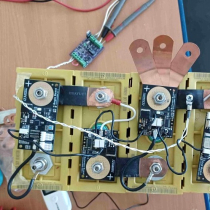
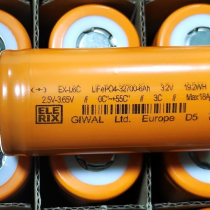
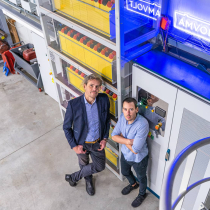

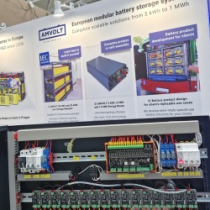
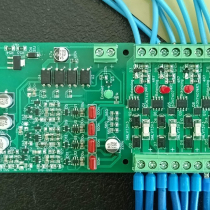
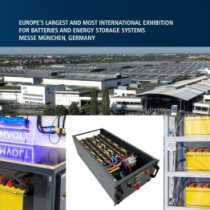
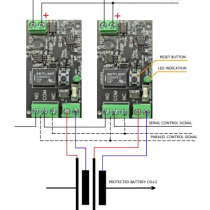
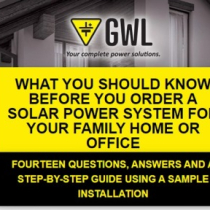


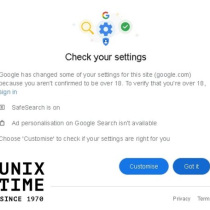
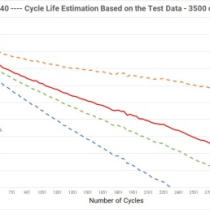
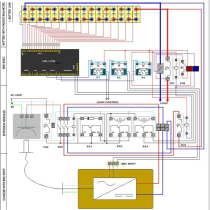
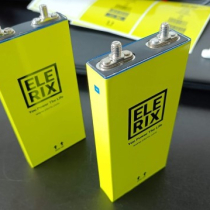
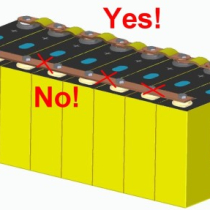
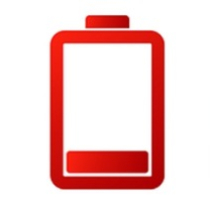

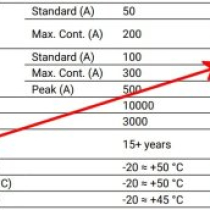
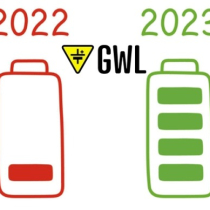
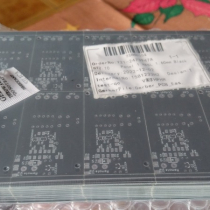

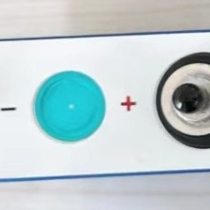
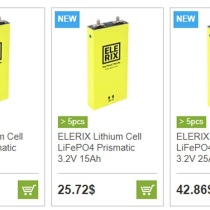
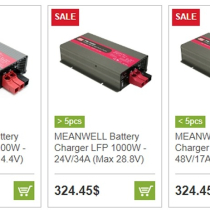
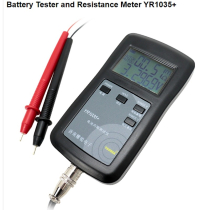
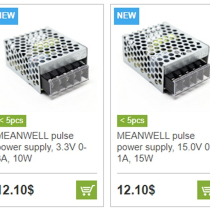
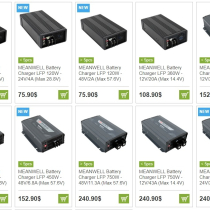
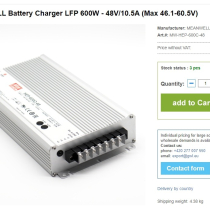
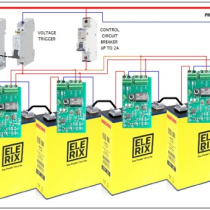
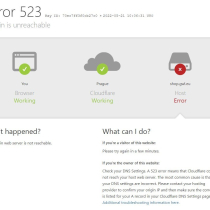
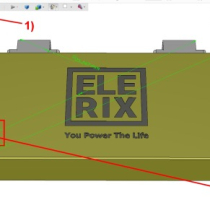
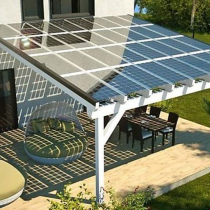
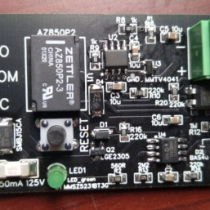

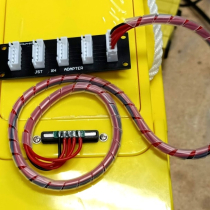
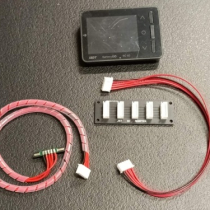
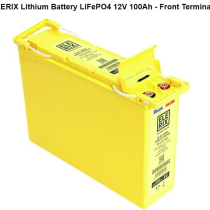
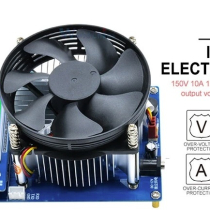

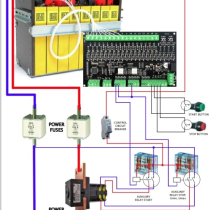
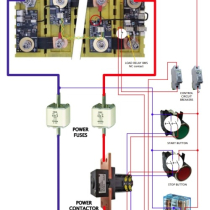
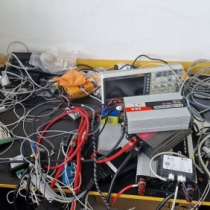
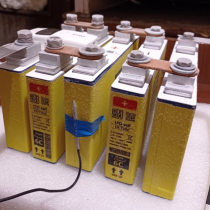
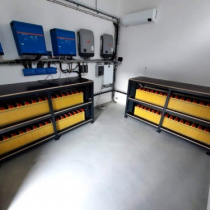
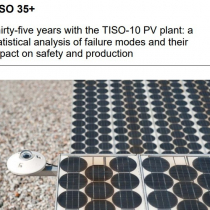
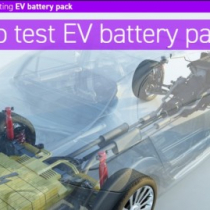
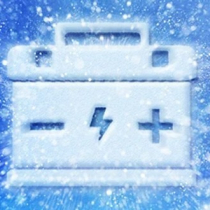
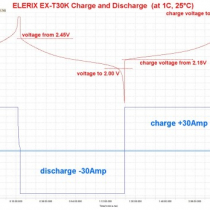
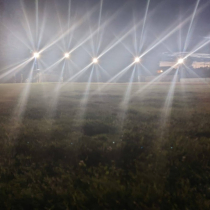
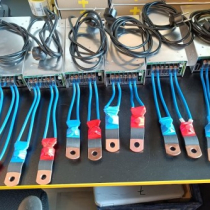
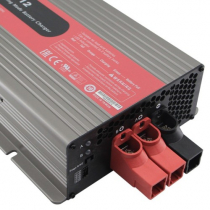
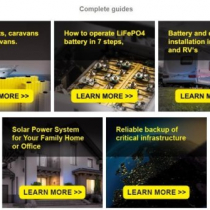
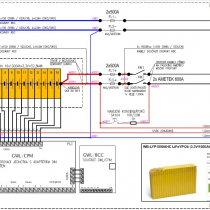
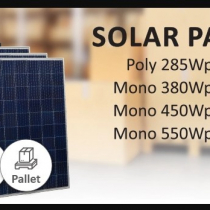
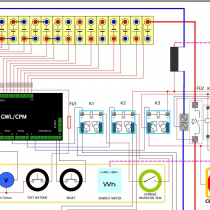
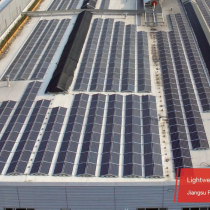
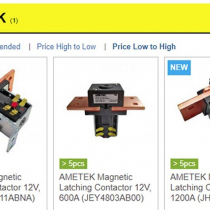
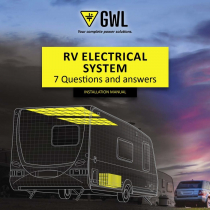

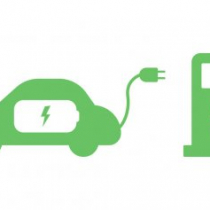
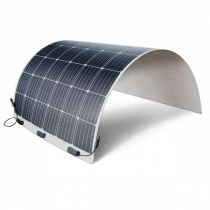
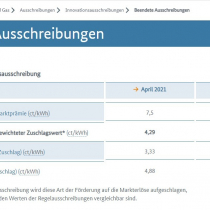
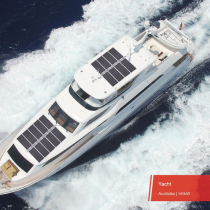

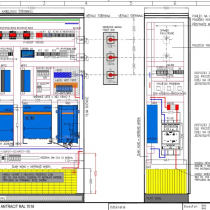
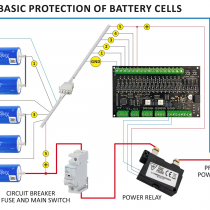
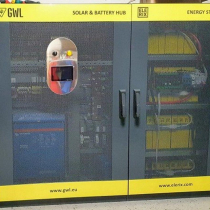
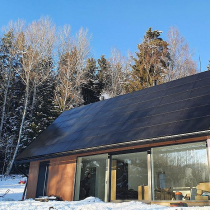
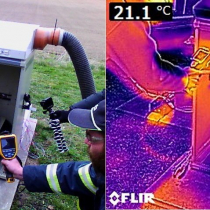
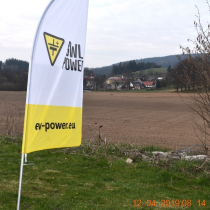
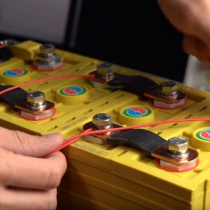
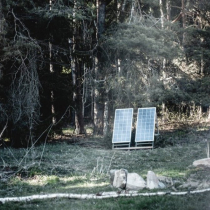
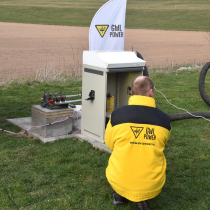
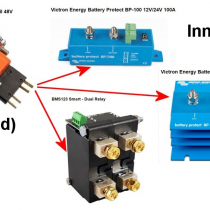
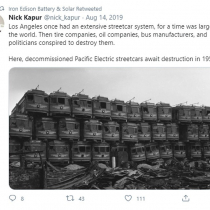
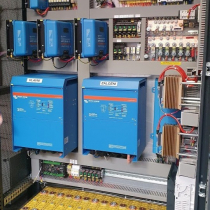
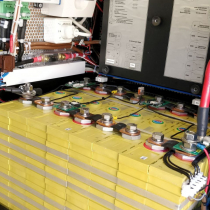
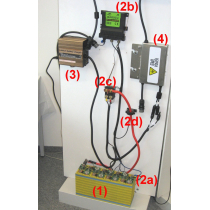
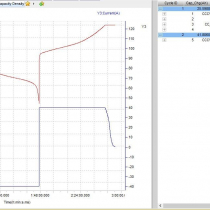
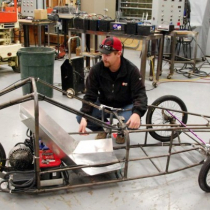
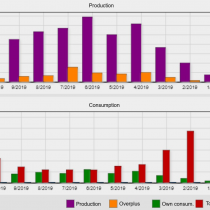
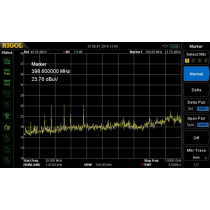

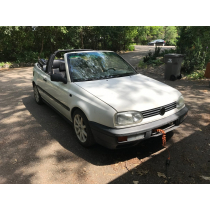
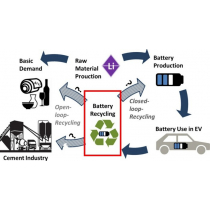
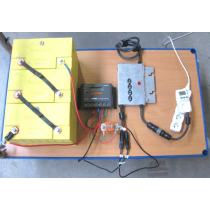
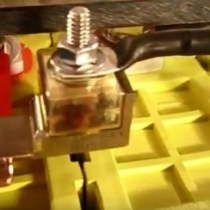
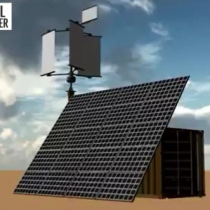
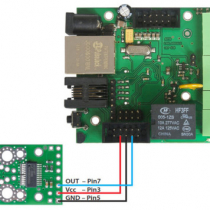
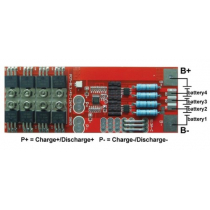
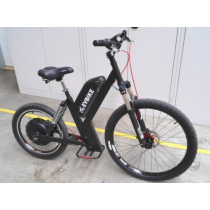
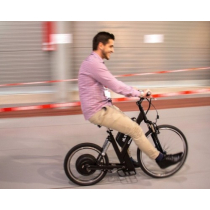
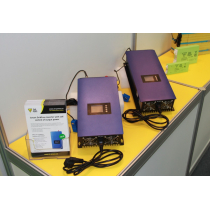

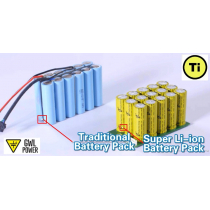
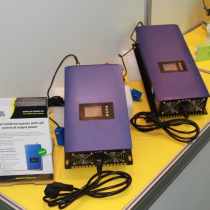
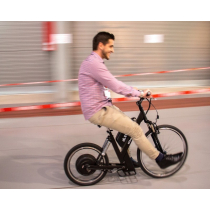
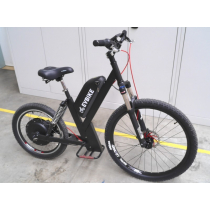
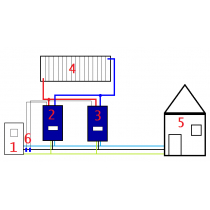
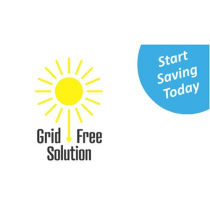
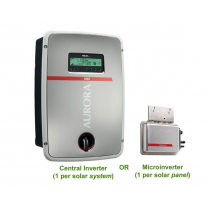
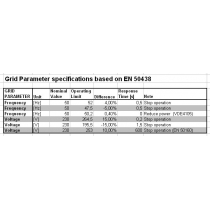
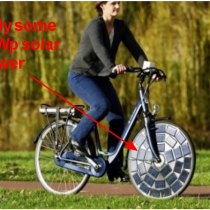
1.jpg)
